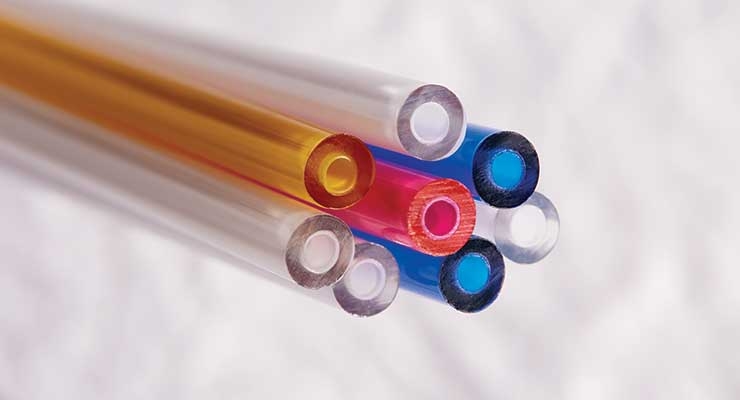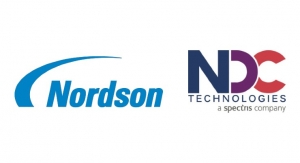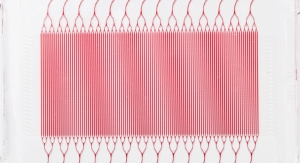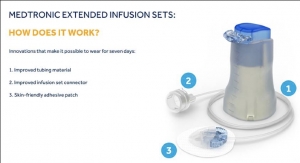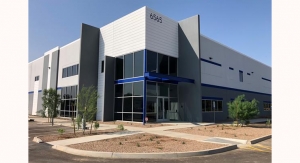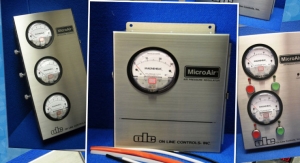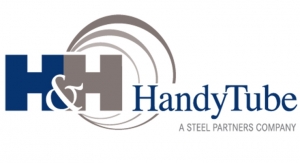Mark Crawford, Contributing Writer04.03.18
According to a September 2016 Markets and Markets report,1 the global medical tubing market is expected to grow at a compound annual growth rate of 8 percent from 2016 to 2021. Emerging Asia-Pacific markets and a steady increase in minimally invasive surgeries are driving this expansion. More medical procedures are utilizing catheters as delivery systems (for example, ablation and micro implants), which often require enhanced tubing characteristics, such as multiple durometers, deflection capability, and steerability. This trend toward miniaturization in medical devices has advanced the science of microextrusion to the point where extruders can create tubing with an interior-diameter (ID) size in the 35-50 micron range.
Medical tubing is commonly used for catheters and cannulas, drug delivery systems, and special applications such as peristaltic pump tubing. Popular tubing requests from medical device manufacturers (MDMs) are multi-lumen tubing, custom bump tubing, co-extrusions, profile extrusions, braid-reinforced extrusions, and coated wires. MDMs are also looking for more functionality in their tubing, such as more lumens within smaller tubes, non-symmetric cross sections, surface modifications and coatings, and the integration of active pharmaceutical ingredients or antimicrobial additives.
The tubing market is very active, with MDMs releasing a number of new or next-generation products. Vendors and suppliers continue to provide advanced tubing equipment and materials. In addition, the ongoing trend toward original equipment manufacturer (OEM) consolidation has pressured supply chain partners to cut costs or improve efficiencies to stay competitive.
“OEMs are working to consolidate their supply bases,” said Christian Herrild, director of growth strategies for Teel Plastics, a Baraboo, Wis.-based manufacturer of plastic tubing for the medical device industry. “Generally, they call it rationalizing—which means you need a defensible reason to be on the list, or they will look to replace you.”
There is also strong interest in shortening the supply chain by using more reliable, vertically integrated domestic partners. This is due to diminished manufacturing savings offshore as labor costs rise in lower-cost countries, as well as the increased perceived risk the Trump administration has created regarding tariff, trade, and shipping issues. As a result, OEMs want shorter and safer supply chains.
“The situation in Puerto Rico also seems to have accelerated the trend of reviewing supply chain risk,” added Herrild. “The fact that infrastructure there is still not in good shape months after the hurricane is making companies reevaluate systematic risks to their supply chains. Hurricane Maria may be for the medical device supply chain what Fukushima was to automotive.”
What OEMs Want
As medical device applications expand, tubing properties such as flexibility, lubricity, clarity, kink resistance, and the ability to hold tight tolerances have a big impact on the functionality and final design of a device. This is especially true for smaller, more complex devices and components—for example, micro-catheters with small diameters with very thin walls that must still be strong enough to maintain accurate pressures and flow mechanics. MDMs count on their tubing partners to come up with the best ways to create the most functional, highest-quality products possible that push the edge of extrusion science (all with shorter cycle times, of course)—for example, the rapidly expanding catheter market.
“In the world of neurovascular techniques, clinicians are pushing for solutions that enable them to deliver complex procedures more efficiently, thereby reducing costs and providing higher quality of care to patients,” said Joe Rowan, president and CEO of USA and Europe for Junkosha, a Japan-based provider of tubing, wire and cable, molding and component, and film products for a variety of sectors, including healthcare. “Procedures such as delivering stents, coils, and, in some cases, even signals/therapy down the catheter are all techniques that are transitioning from ‘nice to have’ to being essential over the next few years.”
In another neurovascular example, in addition to using the femoral artery to access the cardiovascular system, surgeons are looking to provide the same delivery capability via brachial, radial, and pedal access points.
“These require development of smaller outer diameter (OD) shafts and, in some cases, longer-length shafts,” stated Steven Burdorf, president of Catheter and Medical Design, a St. Paul, Minn.-based provider of reinforced braided catheter shafts for cardiovascular, neurovascular, and gastrointestinal procedures. “If this trend continues to grow, we will need to make some capital investments to support the longer length associated with the higher volume.”
Finding a contract manufacturer (CM) that can meet these high-precision demands for smaller diameters, thinner walls, and higher functionality is just part of the equation for MDMs. They also demand product quality, repeatability, and process reliability—including a secure supply chain. Not only do they want uninterrupted supply flow, a solid contingency plan must be in place to deal with any disruptions that might occur.
The best way to do this is by developing “one-stop shop” partnerships with key suppliers that share their specialized knowledge and manufacturing expertise (especially design for manufacturability during the design stage) and also have quality systems in place to protect the supply chain (including Industry 4.0 tools, such as the Internet of Things). Working with vertically integrated suppliers provides more control over processes, validations, production costs, communications, and delivery—thereby reducing operational costs and rework and delivering higher-quality products into the marketplace faster.
Latest Trends in Tubing
As devices get smaller and more complex, MDMs need customized tubing solutions to deliver the functionality they expect—for example, electrical wires embedded in the wall of the tubing to power a device or sensors. Added reinforcements or variable dimensions along the tube are often customized features. High-pressure tubing that must meet thin wall requirements and withstand high absolute pressures goes through multiple tests before it is custom made. MDMs often bring in designs that call for multi-layer extrusions that blend physical properties from each material to create tubing with highly specific performance specifications.
A big trend in customized tubing is creating smaller and thinner tubes that can accommodate more lumens to provide multiple functions. Achieving super-thin walls pushes the limits of tubing technology and repeatability—for example, inner wall linings can be a few thousandths of an inch thick. Walls must also be strong enough to meet pressure testing and manufacturing repeatability requirements, which often requires customized reinforcement. Material transition tubes, in which one material transitions to another over the length of the tube, are carefully designed to have different mechanical properties at specific points along the tube. Tubing can also be designed to protect light-sensitive solutions and sensitive pharmaceutical ingredients.
With this ever-expanding range of tubing functions, MDMs are using tubing in more creative ways, especially with catheter applications. Tubing can be designed to provide conduits for the delivery of signals or energy. For example, intravascular ultrasound can undertake such diagnostic applications as intravenous examination of atherosclerosis. Transcranial magnetic resonance imaging-guided high-intensity focused ultrasound is a non-invasive treatment for various brain diseases such as brain cancer and stroke. A new device, pioneered by Fremont, Calif.-based Shockwave Medical, combines lithotripsy—which uses sound waves to break up calcium and is often used to treat kidney stones or calcified blood vessels—with the commonly used angioplasty balloon catheter.
Catheters and guidewires continue to get smaller in size. At the February 2018 MD&M West event in California, Junkosha unveiled its new, ultra-small peelable heat shrink tubing (PHST) and high-shrink ratio PHST. “Our ultra-small PHST is the only suitable tubing for laminating jacket coatings to tiny guidewires, such as 0.011 inches and 0.014 inches, leveraging the fact that PHST has a recovered ID down to 0.009 inches,” said Rowan. “These miniature guidewires are perfect for applications including the navigation of vessels to reach a lesion or vessel segment within the brain or heart.”
The high-shrink ratio PHST (2:1) is suitable for processes that demand a high compression and shrink ratio, such as the manufacture of tapered microcatheter shafts. OEMs are increasingly interested in PHST because it ultimately reduces total cost of ownership for the catheter manufacturer. “Since OEMs no longer have to use the dated process of skiving, we can help them produce the final product more rapidly with improved yields and lower inspection levels, all while being more ergonomically safe,” said Rowan.
Customization is also aided by digital design tools that some vendors make available to their clients. “Several suppliers have leveraged digital technology to speed the design process, with online tools to design semi-custom or custom tubing, balloons, sheaths, guidewires, and balloon catheters,” Katie Karmelek, owner of Boston, Mass.-based Karmelek Engineering, said in a recent article for Medicalplasticsnews.com. “Engineers can choose from a range of specifications—including ID, OD, wall thickness, length, and more than 20 materials—to order custom, single-lumen extrusions. These tools can dramatically reduce the time and cost of developing a catheter-based device.”
Material Challenges
Although MDMs have thousands of highly engineered thermoplastic resins to choose from, most of them still prefer polyvinyl chloride (PVC) because of its equivalent functional properties and low cost, as compared to other polymers. MDMs have used PVC for decades, which has long been known as an efficient and easy-to-process material for flexible infusion lines. Today, the vast majority of infusion tubing is still made from soft PVC.
This, however, is starting to change. Studies have shown that many highly sensitive drugs are adsorbed on the tubing’s surface, with the result that only a fraction of the intended dose reaches the patient. Health issues may also arise for patients if certain plasticizers or other additives are leached from the PVC material by infusion solutions.
With these problems already known and perhaps others to come, including the possibility that PVC may eventually be severely restricted or banned by regulatory agencies for toxicity concerns, more MDMs are looking for PVC substitutes. Candidates include polypropylene blends and thermoplastic elastomers (TPEs), especially for high-volume PVC tubing demands. A variety of TPE compounds provide the same clarity, haptics, physical properties, and kink- and clamp-resistance as PVC and are relatively easy to extrude; they also show enhanced gamma stability and flexibility.
“For companies that stay in PVC, next-generation plasticizers such as dioctyl terephthalate [DOTP], 1,2-cyclohexane dicarboxylic acid diisononyl ester [DINCH], Tris(2-ethylhexyl)trimellitate [TOTM], and citrates will be the norm,” said Herrild. “I would expect that all new PVC devices going through the design phase will utilize different plasticizers.”
Another solution to the PVC problem is lining the interior of the PVC tube with a drug-resistant material. For example, Raumedic, a Helmbrechts, Germany-based provider of extrusion, injection molding, and assembly services to the medical device industry, developed a layered tubing product that consists of a low-density polyethylene (LDPE) inner layer, an ethylene-vinyl-acetate-copolymer (EVA) bonding agent, and a PVC outer layer. The inner polyethylene layer is chemically neutral with the flow-through medium and the EVA middle layer serves as a bonding agent between the LDPE and PVC layers.
Steel Tubing
A strong trend toward customization also exists in the stainless-steel tubing market. Engineers want application-specific physical properties in their products that will give them a competitive advantage. This usually translates into using different alloys, but sometimes it involves pushing capabilities in manufacturing as well, such as specific physical properties like hardness, tensile strength, and stiffness, smaller dimensions, tighter tolerances, and improved surface finishes.
Like the extrusion market, steel tubing is a very active industry. Lead times on raw tubing and cut tubing are getting longer, especially in the United States, Europe, and Asia. Common OEM requests are smaller tube sizes, tighter tolerances, and non-gage “special” sizes for advanced designs. This includes a strong demand for ultra-small diameter (USD) tubing (less than 0.0625 inches) for specialized applications. USD tubing can withstand high working pressures and requires an inside diameter that is both clean and smooth (low surface roughness). Achieving these properties presents unique challenges because of the extremely small tubing diameters—for example, inside diameters are smaller than a human hair and must still withstand high pressure requirements.
For many applications, from medical devices to chromatography, laboratories and OEMs of instrumentation equipment are pushing for more sensitive, responsive instruments, which typically requires USD tubing.
“In chromatography, for example, the right kind of tubing can increase the sampling efficiencies of pressurized liquid solvents, making these cutting-edge instruments faster and more precise than ever,” said Ozgul Baser, marketing and communications manager for HandyTube Corporation, a Camden, Del.-based manufacturer of seamless stainless-steel coil and straight-length tubing for chromatography, healthcare, and life sciences markets. “The ultra-small diameter tubing used in laboratory equipment, medical devices, and other high-precision applications therefore requires smoother, cleaner inner diameters to ensure high-purity delivery of gas, solvents, chemicals, and other media. They must also be made out of high-quality stainless-steel alloys that can withstand high pressures and temperatures.”
From the standpoint of cutting and grinding steel tubing, advanced equipment makes it easier to cut smaller tubing and hold more accurate tolerances.
“We have successfully produced equipment to reliably hold length tolerances of ±0.001 inches [0.025 mm] and cut lengths as short as 0.118 inches [3 mm] on tubing as small as 31 gage (0.01 inches) [0.25 mm] diameter,” said Tom Travia, director of business development for Tridex Technology, a Philadelphia, Pa.-based provider of electrochemical grinding (ECG) and electrochemical tube cutoff (ECC) equipment for the medical device industry. “Cutting such small parts without burrs is a huge cost savings as well.”
Many OEM and tube consumers share the common belief that the only way to cut tubes without burrs is via laser and electrical discharge machining (EDM). Although laser and EDM don’t really create burrs, they can leave sharp edges with some amount of metallurgical damage from the heat of the cut.
“Lasers are very fast but are often limited to cutting one tube at a time,” said Travia. “EDM is very accurate but slow. An ECG cut, however, is not only much faster, but also the only completely burr-free way to cut. The combination of abrasive cutting and electrochemical erosion cuts fast, but leaves a small edge break on the OD and ID of the tube without any secondary processes.”
Because USD tubing is so small (outer diameter sizes as small as 0.02 inches and inner diameter sizes as small as 0.005 inches), it cannot be measured at various points using the circular gauge pins to measure the ID size. Therefore, it is important to maintain consistency and accuracy when drawing the tube. This can be achieved by adjusting the tooling and/or ensuring the tubing’s surface finish is achieved at prior sizes of the draw process before the final draw.
“To ensure a smooth outer surface at finish, the tube is polished through a series of belts,” said Baser. “These belts are of varying levels of grit in addition to different amounts of wear through use. Both factors have a significant impact on the surface roughness of the tube. Selecting the right combination of belts to achieve the desired finish requires a combination of knowledge and experience that cannot be distilled into a simple formula.”
Moving Forward
Extruders are becoming accustomed to the constant clamor for higher performance, smaller sizes, faster turnaround, longer lifecycle, reduced cost, traceability, and verification/validation. MDMs count on them to turn all their designs into commercial successes by pushing the limits of tubing technology—all while keeping costs down.
There is, however, a limit to what tubing suppliers can provide with current materials and technologies. The best way to stay on the leading edge of technology, material science, and best practices to meet these evolving manufacturing challenges is by embracing Industry 4.0. Industry 4.0 is the digitization of manufacturing—and most manufacturers are not ready. Some industries, such as automotive and aerospace, are well along the Industry 4.0 learning curve, while others are slower to embrace change.
Industry 4.0 includes the following key areas:
To fully benefit from Industry 4.0, McKinsey and Company2 indicates manufacturers must design and implement a road map with clear targets and key performance indicators that consist of three elements:
“We expect that manufacturers will increasingly be able to draw on real-time data from their installed base to provide new value-added services for their customers,” stated McKinsey and Company. “While in the past the link between manufacturers and their products was mostly cut off behind the point of sale, new sensor and communication technologies increasingly enable manufacturers to collect real-time data from their machines while they are in operation. This opens new possibilities for manufacturers to both improve existing aftersales services and add new value-added services that draw on data from the installed base.”
It also improves manufacturing efficiencies and competitiveness, shortens time to market, and reduces operational costs—so essential for the bottom line.
However, embracing Industry 4.0 will require elevating it to a strategic corporate mission, including investments in technology and training—something that could be a challenge to the typical MDM mindset.
“The biggest advancement in medical device manufacturing in the next three to five years is the move to adopt Industry 4.0,” predicted Herrild. “We find that many lines are not even yet at the 3.0 level, where some adjustments to the line are done automatically through feedback loops and data can be extracted. These lines, however, are years away from 4.0, where the lines can run without operator interaction, know what material was used for what part, whether the parts are good, and when to make any adjustments through automatic data analysis and machine interaction.”
References
Mark Crawford is a full-time freelance business and marketing/communications writer based in Madison, Wis. His clients range from startups to global manufacturing leaders. He also writes a variety of feature articles for regional and national publications and is the author of five books.
Medical tubing is commonly used for catheters and cannulas, drug delivery systems, and special applications such as peristaltic pump tubing. Popular tubing requests from medical device manufacturers (MDMs) are multi-lumen tubing, custom bump tubing, co-extrusions, profile extrusions, braid-reinforced extrusions, and coated wires. MDMs are also looking for more functionality in their tubing, such as more lumens within smaller tubes, non-symmetric cross sections, surface modifications and coatings, and the integration of active pharmaceutical ingredients or antimicrobial additives.
The tubing market is very active, with MDMs releasing a number of new or next-generation products. Vendors and suppliers continue to provide advanced tubing equipment and materials. In addition, the ongoing trend toward original equipment manufacturer (OEM) consolidation has pressured supply chain partners to cut costs or improve efficiencies to stay competitive.
“OEMs are working to consolidate their supply bases,” said Christian Herrild, director of growth strategies for Teel Plastics, a Baraboo, Wis.-based manufacturer of plastic tubing for the medical device industry. “Generally, they call it rationalizing—which means you need a defensible reason to be on the list, or they will look to replace you.”
There is also strong interest in shortening the supply chain by using more reliable, vertically integrated domestic partners. This is due to diminished manufacturing savings offshore as labor costs rise in lower-cost countries, as well as the increased perceived risk the Trump administration has created regarding tariff, trade, and shipping issues. As a result, OEMs want shorter and safer supply chains.
“The situation in Puerto Rico also seems to have accelerated the trend of reviewing supply chain risk,” added Herrild. “The fact that infrastructure there is still not in good shape months after the hurricane is making companies reevaluate systematic risks to their supply chains. Hurricane Maria may be for the medical device supply chain what Fukushima was to automotive.”
What OEMs Want
As medical device applications expand, tubing properties such as flexibility, lubricity, clarity, kink resistance, and the ability to hold tight tolerances have a big impact on the functionality and final design of a device. This is especially true for smaller, more complex devices and components—for example, micro-catheters with small diameters with very thin walls that must still be strong enough to maintain accurate pressures and flow mechanics. MDMs count on their tubing partners to come up with the best ways to create the most functional, highest-quality products possible that push the edge of extrusion science (all with shorter cycle times, of course)—for example, the rapidly expanding catheter market.
“In the world of neurovascular techniques, clinicians are pushing for solutions that enable them to deliver complex procedures more efficiently, thereby reducing costs and providing higher quality of care to patients,” said Joe Rowan, president and CEO of USA and Europe for Junkosha, a Japan-based provider of tubing, wire and cable, molding and component, and film products for a variety of sectors, including healthcare. “Procedures such as delivering stents, coils, and, in some cases, even signals/therapy down the catheter are all techniques that are transitioning from ‘nice to have’ to being essential over the next few years.”
In another neurovascular example, in addition to using the femoral artery to access the cardiovascular system, surgeons are looking to provide the same delivery capability via brachial, radial, and pedal access points.
“These require development of smaller outer diameter (OD) shafts and, in some cases, longer-length shafts,” stated Steven Burdorf, president of Catheter and Medical Design, a St. Paul, Minn.-based provider of reinforced braided catheter shafts for cardiovascular, neurovascular, and gastrointestinal procedures. “If this trend continues to grow, we will need to make some capital investments to support the longer length associated with the higher volume.”
Finding a contract manufacturer (CM) that can meet these high-precision demands for smaller diameters, thinner walls, and higher functionality is just part of the equation for MDMs. They also demand product quality, repeatability, and process reliability—including a secure supply chain. Not only do they want uninterrupted supply flow, a solid contingency plan must be in place to deal with any disruptions that might occur.
The best way to do this is by developing “one-stop shop” partnerships with key suppliers that share their specialized knowledge and manufacturing expertise (especially design for manufacturability during the design stage) and also have quality systems in place to protect the supply chain (including Industry 4.0 tools, such as the Internet of Things). Working with vertically integrated suppliers provides more control over processes, validations, production costs, communications, and delivery—thereby reducing operational costs and rework and delivering higher-quality products into the marketplace faster.
Latest Trends in Tubing
As devices get smaller and more complex, MDMs need customized tubing solutions to deliver the functionality they expect—for example, electrical wires embedded in the wall of the tubing to power a device or sensors. Added reinforcements or variable dimensions along the tube are often customized features. High-pressure tubing that must meet thin wall requirements and withstand high absolute pressures goes through multiple tests before it is custom made. MDMs often bring in designs that call for multi-layer extrusions that blend physical properties from each material to create tubing with highly specific performance specifications.
A big trend in customized tubing is creating smaller and thinner tubes that can accommodate more lumens to provide multiple functions. Achieving super-thin walls pushes the limits of tubing technology and repeatability—for example, inner wall linings can be a few thousandths of an inch thick. Walls must also be strong enough to meet pressure testing and manufacturing repeatability requirements, which often requires customized reinforcement. Material transition tubes, in which one material transitions to another over the length of the tube, are carefully designed to have different mechanical properties at specific points along the tube. Tubing can also be designed to protect light-sensitive solutions and sensitive pharmaceutical ingredients.
With this ever-expanding range of tubing functions, MDMs are using tubing in more creative ways, especially with catheter applications. Tubing can be designed to provide conduits for the delivery of signals or energy. For example, intravascular ultrasound can undertake such diagnostic applications as intravenous examination of atherosclerosis. Transcranial magnetic resonance imaging-guided high-intensity focused ultrasound is a non-invasive treatment for various brain diseases such as brain cancer and stroke. A new device, pioneered by Fremont, Calif.-based Shockwave Medical, combines lithotripsy—which uses sound waves to break up calcium and is often used to treat kidney stones or calcified blood vessels—with the commonly used angioplasty balloon catheter.
Catheters and guidewires continue to get smaller in size. At the February 2018 MD&M West event in California, Junkosha unveiled its new, ultra-small peelable heat shrink tubing (PHST) and high-shrink ratio PHST. “Our ultra-small PHST is the only suitable tubing for laminating jacket coatings to tiny guidewires, such as 0.011 inches and 0.014 inches, leveraging the fact that PHST has a recovered ID down to 0.009 inches,” said Rowan. “These miniature guidewires are perfect for applications including the navigation of vessels to reach a lesion or vessel segment within the brain or heart.”
The high-shrink ratio PHST (2:1) is suitable for processes that demand a high compression and shrink ratio, such as the manufacture of tapered microcatheter shafts. OEMs are increasingly interested in PHST because it ultimately reduces total cost of ownership for the catheter manufacturer. “Since OEMs no longer have to use the dated process of skiving, we can help them produce the final product more rapidly with improved yields and lower inspection levels, all while being more ergonomically safe,” said Rowan.
Customization is also aided by digital design tools that some vendors make available to their clients. “Several suppliers have leveraged digital technology to speed the design process, with online tools to design semi-custom or custom tubing, balloons, sheaths, guidewires, and balloon catheters,” Katie Karmelek, owner of Boston, Mass.-based Karmelek Engineering, said in a recent article for Medicalplasticsnews.com. “Engineers can choose from a range of specifications—including ID, OD, wall thickness, length, and more than 20 materials—to order custom, single-lumen extrusions. These tools can dramatically reduce the time and cost of developing a catheter-based device.”
Material Challenges
Although MDMs have thousands of highly engineered thermoplastic resins to choose from, most of them still prefer polyvinyl chloride (PVC) because of its equivalent functional properties and low cost, as compared to other polymers. MDMs have used PVC for decades, which has long been known as an efficient and easy-to-process material for flexible infusion lines. Today, the vast majority of infusion tubing is still made from soft PVC.
This, however, is starting to change. Studies have shown that many highly sensitive drugs are adsorbed on the tubing’s surface, with the result that only a fraction of the intended dose reaches the patient. Health issues may also arise for patients if certain plasticizers or other additives are leached from the PVC material by infusion solutions.
With these problems already known and perhaps others to come, including the possibility that PVC may eventually be severely restricted or banned by regulatory agencies for toxicity concerns, more MDMs are looking for PVC substitutes. Candidates include polypropylene blends and thermoplastic elastomers (TPEs), especially for high-volume PVC tubing demands. A variety of TPE compounds provide the same clarity, haptics, physical properties, and kink- and clamp-resistance as PVC and are relatively easy to extrude; they also show enhanced gamma stability and flexibility.
“For companies that stay in PVC, next-generation plasticizers such as dioctyl terephthalate [DOTP], 1,2-cyclohexane dicarboxylic acid diisononyl ester [DINCH], Tris(2-ethylhexyl)trimellitate [TOTM], and citrates will be the norm,” said Herrild. “I would expect that all new PVC devices going through the design phase will utilize different plasticizers.”
Another solution to the PVC problem is lining the interior of the PVC tube with a drug-resistant material. For example, Raumedic, a Helmbrechts, Germany-based provider of extrusion, injection molding, and assembly services to the medical device industry, developed a layered tubing product that consists of a low-density polyethylene (LDPE) inner layer, an ethylene-vinyl-acetate-copolymer (EVA) bonding agent, and a PVC outer layer. The inner polyethylene layer is chemically neutral with the flow-through medium and the EVA middle layer serves as a bonding agent between the LDPE and PVC layers.
Steel Tubing
A strong trend toward customization also exists in the stainless-steel tubing market. Engineers want application-specific physical properties in their products that will give them a competitive advantage. This usually translates into using different alloys, but sometimes it involves pushing capabilities in manufacturing as well, such as specific physical properties like hardness, tensile strength, and stiffness, smaller dimensions, tighter tolerances, and improved surface finishes.
Like the extrusion market, steel tubing is a very active industry. Lead times on raw tubing and cut tubing are getting longer, especially in the United States, Europe, and Asia. Common OEM requests are smaller tube sizes, tighter tolerances, and non-gage “special” sizes for advanced designs. This includes a strong demand for ultra-small diameter (USD) tubing (less than 0.0625 inches) for specialized applications. USD tubing can withstand high working pressures and requires an inside diameter that is both clean and smooth (low surface roughness). Achieving these properties presents unique challenges because of the extremely small tubing diameters—for example, inside diameters are smaller than a human hair and must still withstand high pressure requirements.
For many applications, from medical devices to chromatography, laboratories and OEMs of instrumentation equipment are pushing for more sensitive, responsive instruments, which typically requires USD tubing.
“In chromatography, for example, the right kind of tubing can increase the sampling efficiencies of pressurized liquid solvents, making these cutting-edge instruments faster and more precise than ever,” said Ozgul Baser, marketing and communications manager for HandyTube Corporation, a Camden, Del.-based manufacturer of seamless stainless-steel coil and straight-length tubing for chromatography, healthcare, and life sciences markets. “The ultra-small diameter tubing used in laboratory equipment, medical devices, and other high-precision applications therefore requires smoother, cleaner inner diameters to ensure high-purity delivery of gas, solvents, chemicals, and other media. They must also be made out of high-quality stainless-steel alloys that can withstand high pressures and temperatures.”
From the standpoint of cutting and grinding steel tubing, advanced equipment makes it easier to cut smaller tubing and hold more accurate tolerances.
“We have successfully produced equipment to reliably hold length tolerances of ±0.001 inches [0.025 mm] and cut lengths as short as 0.118 inches [3 mm] on tubing as small as 31 gage (0.01 inches) [0.25 mm] diameter,” said Tom Travia, director of business development for Tridex Technology, a Philadelphia, Pa.-based provider of electrochemical grinding (ECG) and electrochemical tube cutoff (ECC) equipment for the medical device industry. “Cutting such small parts without burrs is a huge cost savings as well.”
Many OEM and tube consumers share the common belief that the only way to cut tubes without burrs is via laser and electrical discharge machining (EDM). Although laser and EDM don’t really create burrs, they can leave sharp edges with some amount of metallurgical damage from the heat of the cut.
“Lasers are very fast but are often limited to cutting one tube at a time,” said Travia. “EDM is very accurate but slow. An ECG cut, however, is not only much faster, but also the only completely burr-free way to cut. The combination of abrasive cutting and electrochemical erosion cuts fast, but leaves a small edge break on the OD and ID of the tube without any secondary processes.”
Because USD tubing is so small (outer diameter sizes as small as 0.02 inches and inner diameter sizes as small as 0.005 inches), it cannot be measured at various points using the circular gauge pins to measure the ID size. Therefore, it is important to maintain consistency and accuracy when drawing the tube. This can be achieved by adjusting the tooling and/or ensuring the tubing’s surface finish is achieved at prior sizes of the draw process before the final draw.
“To ensure a smooth outer surface at finish, the tube is polished through a series of belts,” said Baser. “These belts are of varying levels of grit in addition to different amounts of wear through use. Both factors have a significant impact on the surface roughness of the tube. Selecting the right combination of belts to achieve the desired finish requires a combination of knowledge and experience that cannot be distilled into a simple formula.”
Moving Forward
Extruders are becoming accustomed to the constant clamor for higher performance, smaller sizes, faster turnaround, longer lifecycle, reduced cost, traceability, and verification/validation. MDMs count on them to turn all their designs into commercial successes by pushing the limits of tubing technology—all while keeping costs down.
There is, however, a limit to what tubing suppliers can provide with current materials and technologies. The best way to stay on the leading edge of technology, material science, and best practices to meet these evolving manufacturing challenges is by embracing Industry 4.0. Industry 4.0 is the digitization of manufacturing—and most manufacturers are not ready. Some industries, such as automotive and aerospace, are well along the Industry 4.0 learning curve, while others are slower to embrace change.
Industry 4.0 includes the following key areas:
- Big data—capture, storage, and analytics
- New tools for rapidly converting data into actionable business intelligence
- Advancing human-machine interfaces and tools using augmented reality and virtual reality, including simulations
- Implementing key tools such as additive manufacturing, 3D printing, sensor technology, robotics, automation, and real-time machine-to-machine communication and data collection
To fully benefit from Industry 4.0, McKinsey and Company2 indicates manufacturers must design and implement a road map with clear targets and key performance indicators that consist of three elements:
- Create a rollout plan for the entire value chain that makes Industry 4.0 an integral part of the manufacturer’s process landscape that also enables technology/implementation partners
- Develop a compelling Industry 4.0 change story
- Establish a project team for implementation and training across the production network
“We expect that manufacturers will increasingly be able to draw on real-time data from their installed base to provide new value-added services for their customers,” stated McKinsey and Company. “While in the past the link between manufacturers and their products was mostly cut off behind the point of sale, new sensor and communication technologies increasingly enable manufacturers to collect real-time data from their machines while they are in operation. This opens new possibilities for manufacturers to both improve existing aftersales services and add new value-added services that draw on data from the installed base.”
It also improves manufacturing efficiencies and competitiveness, shortens time to market, and reduces operational costs—so essential for the bottom line.
However, embracing Industry 4.0 will require elevating it to a strategic corporate mission, including investments in technology and training—something that could be a challenge to the typical MDM mindset.
“The biggest advancement in medical device manufacturing in the next three to five years is the move to adopt Industry 4.0,” predicted Herrild. “We find that many lines are not even yet at the 3.0 level, where some adjustments to the line are done automatically through feedback loops and data can be extracted. These lines, however, are years away from 4.0, where the lines can run without operator interaction, know what material was used for what part, whether the parts are good, and when to make any adjustments through automatic data analysis and machine interaction.”
References
Mark Crawford is a full-time freelance business and marketing/communications writer based in Madison, Wis. His clients range from startups to global manufacturing leaders. He also writes a variety of feature articles for regional and national publications and is the author of five books.

